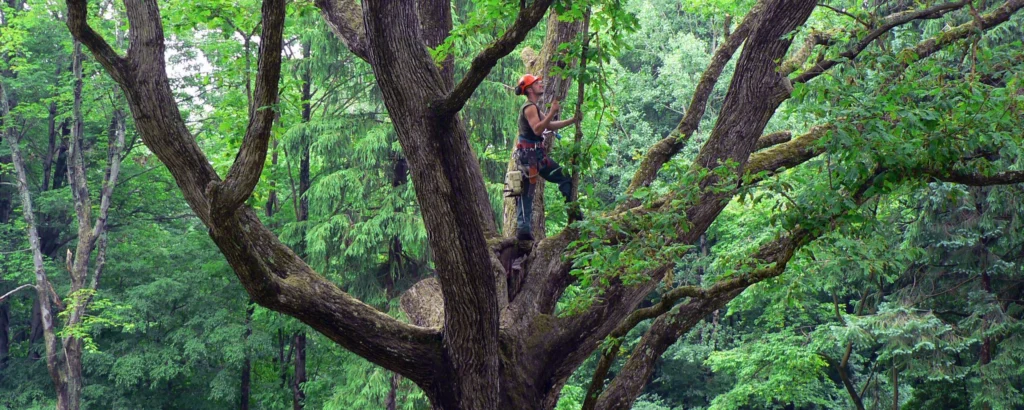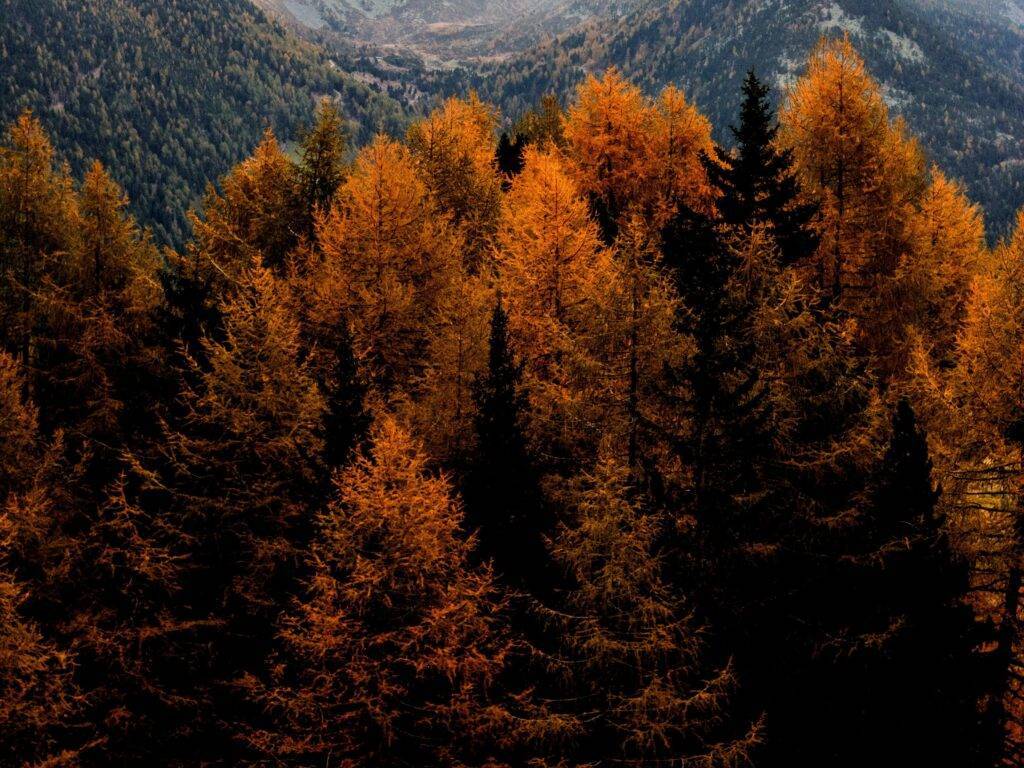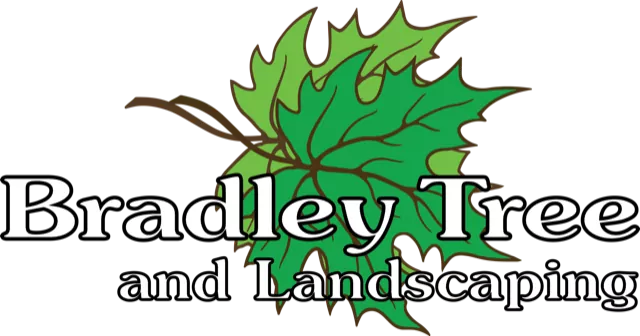Hello and welcome back to the blog here at Bradley Tree and landscaping, home of your favorite Buffalo-area arborists! Here on the blog, we do things like giving you tree care advice, plant health care ideas, guides on identifying native or invasive tree and insect species, rundowns on the best practices for seasonal plant care, and more. Today, as the weather gets into the bitingly cold WNY winter, let’s take some time to talk about winter tree care in Buffalo NY.
As Buffalo’s winter blanket starts to unfold, the silent giants in our backyards – our trees – brace for the cold. In Buffalo, where the winters are as beautiful as they are harsh, seasonal tree care isn’t just a good practice; it’s essential for the survival of your trees.
Understanding Buffalo’s Winter – What Your Trees Are Up Against
Buffalo’s winter is renowned for its biting cold and snowfall. These conditions can stress even the hardiest of trees. Without proper seasonal plant care, the frigid temperatures and heavy snow can lead to broken branches, disease, and even the death of your trees. This is where proactive tree care steps in, transforming winter from a threat to an opportunity for strengthening your trees.
The Basics of Winter Tree Care
Winter tree care in Buffalo deviates significantly from other seasons. It’s a time for protection rather than growth. The key practices include mulching, pruning, and safeguarding against the unique challenges of winter.
Inspecting Trees for Signs of Weakness
Before the first snowfall, inspect your trees for signs of distress like cracks or diseases. Early detection can prevent many winter-related problems. If you’re unsure about what to look for, a professional inspection as part of your seasonal plant care routine can be invaluable.
The Right Way to Mulch Before the Frost
Late fall to early winter is a great time to mulch your trees. Add a thin layer (not exceeding 2 inches) of organic mulch beneath the drip line of your tree, to insulate the soil and roots. It will help protect against temperature drops and slows water loss from the soil. Take care to not pile the mulch directly against the trunk though! Mulching before the frost serves as a blanket for the roots. This helps to keep the soil at a more consistent temperature and helps your trees survive the winter because you have the heart to do some seasonal plant care before it gets too chilly.

Pruning: A Critical Seasonal Plant Care Preparation Step
Pruning during the dormant season is less stressful for trees. It’s the time to remove dead or diseased branches, which can become hazardous under the weight of snow and ice. With the leaves gracefully fallen, the naked branches reveal their secrets, offering a clear view of their intricate structure. This is your golden opportunity to spot those problematic branches that need your attention.
When and How to Prune Your Trees
The ideal time for winter pruning as part of a seasonal plant care strategy is after the leaves have fallen but before heavy snow. Use clean, sharp tools to make precise cuts. If you’re unsure about the proper technique, consider hiring ISA-Certified Arborists to avoid unintended harm. Remember, tree pruning isn’t just a chore; it’s a way to connect with nature and ensure the health and beauty of your trees. Here’s what you need to know:
- The 25% Rule: Trees are more than just part of your garden; they’re living, breathing beings. When pruning, it’s crucial to respect their life force. Ensure you never remove more than 25% of a tree’s foliage in a growing season. Over-pruning can be detrimental, causing unnecessary harm and stress to your leafy friends.
- Say No to Wound Paint: After you’ve made those careful cuts, resist the urge to use wound paint or sealer on your tree. While it might seem like a good idea, it actually does more harm than good. These products trap moisture, leading to rot and decay. Let nature take its course and allow your tree to heal naturally.
Safety First: Why Professional Pruning Matters
Pruning not only requires skill but also an understanding of tree biology. Incorrect pruning can lead to tree damage or even personal injury. Professional arborists, equipped with the right tools and expertise, ensure the job is done safely and effectively. Another safety tip to consider – if you cannot reach the branch with both feet on the ground, or the branch is larger in diameter, bring in the certified arborist! Branches weigh more than they appear to and can easily crush you or whatever is below them.
Preventing Winter Tree Damage
Buffalo’s winters can cause branches to break and trunks to split, in a process called sunscald, which we touched on in a blog post last winter. To prevent damage, remove weak branches, wrap young trees in burlap, and gently shake off heavy snow accumulations from branches. Start at the bottom, overlap layers by one-third, and stop just above the lowest branches. In the springtime, you can remove the wrap. You can also use a white plastic rabbit guard or paint the trunk white.
Managing Snow and Ice Accumulation
While it’s important to remove snow from branches, it’s equally important to do it gently. Use a broom to lightly brush off snow! Avoid shaking branches covered in ice, as this can cause them to break. Keep in mind, a little bit of snow around the base of the tree isn’t much to worry about, and can even provide some level of insulation to roots during the coldest months.

Why Consult a Professional? The ISA-Certified Advantage in Buffalo
ISA-certified arborists bring a level of expertise that is critical in Buffalo’s challenging winters. They can provide tailored care, ensuring your trees not only survive but thrive. They understand the local climate and tree species, making their advice and services invaluable.
Buffalo tree care is at the same time both a science and an art form. Arborists specialize in tree care, the same way an orthodontist specializes in dental surgery. You wouldn’t have that orthodontist perform an open-heart surgery, after all! Similarly, you should be calling insured, ISA-certified arborists instead of the person with a van and some tools from the hardware supply store.
Frequently Asked Questions About Winter Tree Care
Q: How often should I inspect my trees in winter?
A: At least once before winter and periodically after major storms.
Q: Can I prune in late winter?
A: Yes, but it’s best to finish pruning before spring growth starts. For most tree species, winter tends to be a good pruning time.
Ensure You’re Getting The Best Seasonal Plant Care for Your Trees This Winter!
Preparing your trees for winter is an investment in their health and longevity. While this guide offers a starting point, each tree has its unique needs. For personalized advice and services, consider reaching out to professional tree care services like Bradley Tree and Landscaping.
Bradley Tree and Landscaping have been in the arbor business for over four decades, since 1982. That makes us as tied to the Buffalo, NY area as anyone and the perfect choice for your tree care needs. A big box, a national company could do it, but our ISA-Certified Arborists know the native from invasive species to the region, best care for our climate, and more of the minutiae of landscaping needed here.
Our extraordinary service through generations has driven Olmstead Parks to recognize and reward us with taking care of their oldest oak trees. Tree care can be risky, so entrust your tree services with the best arborists in Buffalo.
Call Us Today!
Stay tuned to the Bradley Trees blog, where we regularly go over some basic tree care tips and general guidelines on keeping your landscape and plants healthy! You can also check out our FaceBook and YouTube pages for more arbor info. Here at Bradley Tree and Landscaping, we go to great heights to please you. Get in touch with our ISA-Certified Arborists today by calling us or filling out an online contact form!
Remember, a little care goes a long way in ensuring your trees stand tall and proud through Buffalo’s winters and beyond

